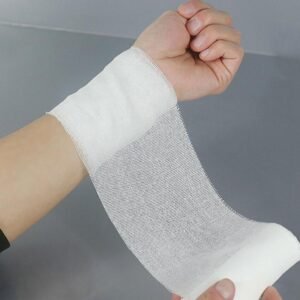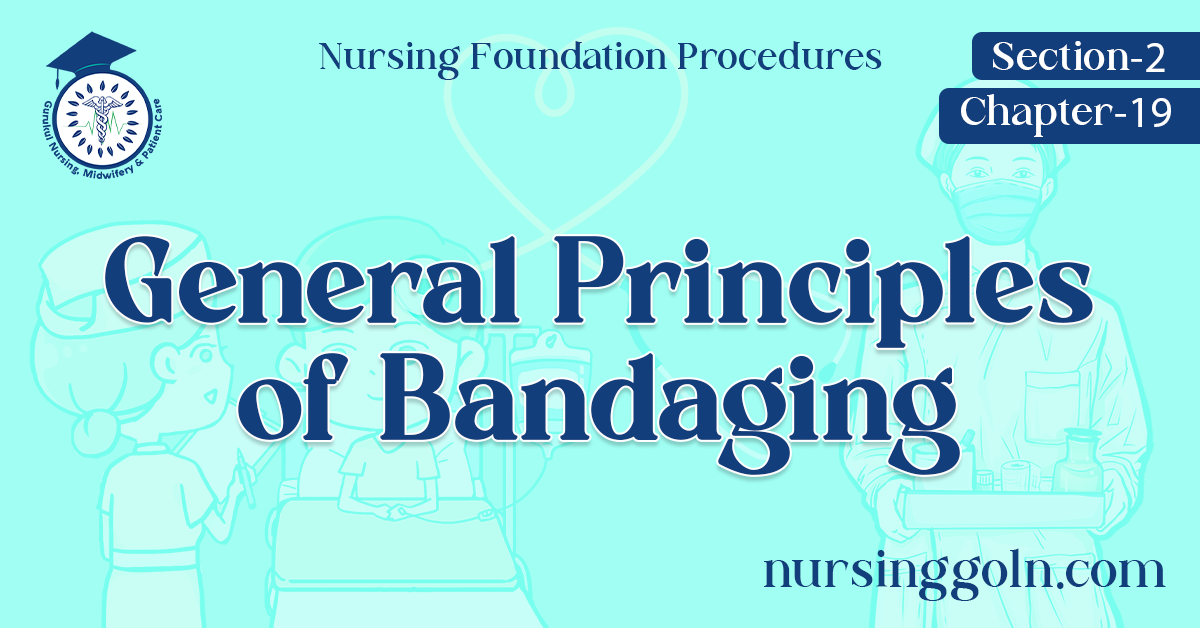General Principles of Bandaging is essential learning for nurses to effectively manage various injuries and conditions. Bandaging is a fundamental nursing skill used to protect wounds and promote healing.
General Principles of Bandaging

GENERAL PRINCIPLES of Bandaging
- The patient should be placed in a comfortable position and it should convenient for the nurse
- The position of the part to be ban aged should be well supported and elevated if necessary The nurse should stand directly in front of the patient or facing part to be bandaged
- A bandage should accomplish its purpose. It may be used to hold dressing in place, to support a part or to immobilize
- Apply and fix bandage at least two circular turns around part is its smallest diameter, so that it can stay in place Skin surfaces should be separated.
- They may be separated.
- They may be separated by either gauze or cotton. In the application of casts, special padding is used over bony prominences.
- Always bandage to the right.

- Exert even pressure as far as possible.
- The bandage should be done in the direction of the venous circulation
- Do not cover the ends of the finger or toes, unless it is necessary in order to cover the injury. It is necessary to observe circulatory changes
- Never apply a wet bandage, when wet bandage applied, terms to shrink and become tight as it dries
- Do not apply a bandage too loosely because it may slip and expose the wound .
- All turns of bandage should be made clockwise unless there is some special reason for doing otherwise the roll should be held in the palm of the hand, with the free end of the bandage coming from the part of the roll.
- Applying bandage, secure terminal extremity by pinning with safety pins or strapping adhesive.

- Remove bandages by gathering folds in a loose mass.
- Passing mass from one hand to the other
- Examine the bandage part frequently for pain, swelling, etc.
Steps by Steps application of key principles of Bandaging:
1. Assessment:
Before applying a bandage, nurses must assess the wound or injury to determine the appropriate type of bandage and technique. The nurse must considers factors including the size, location, and severity of the wound, as well as the patient’s skin condition and any underlying health issues.
2. Cleanliness:
Maintaining cleanliness is essential to prevent infection and promote healing. Nurses must wash their hands thoroughly and wear gloves when handling bandages and wound care supplies. They should also clean and disinfect the wound area before applying the bandage.
3. Gentleness:
Nurses should handle the wound and surrounding skin with care to avoid causing further trauma or discomfort to the patient. They should use gentle, smooth movements when applying and removing bandages to minimize pain and tissue damage.
4. Proper Technique:
Correct bandaging technique is crucial for ensuring the bandage provides the desired level of support and protection. Nurses should apply the bandage evenly and securely, avoiding excessive tension or constriction that could impair circulation or cause discomfort.
5. Pressure:
Bandages are often used to apply pressure to control bleeding or reduce swelling. Nurses should apply the appropriate amount of pressure based on the patient’s condition and the intended purpose of the bandage. They should regularly assess circulation and sensation distal to the bandaged area to ensure adequate perfusion.
6. Coverage:
The bandage should fully cover the wound or injured area while allowing for adequate ventilation and drainage. Nurses should ensure that the bandage extends beyond the edges of the wound to provide a secure seal and prevent contamination.
7. Comfort:
Bandages should be comfortable for the patient to wear, allowing for freedom of movement and minimizing friction or irritation. Nurses should use soft, non-adherent materials and padding to cushion bony prominences and sensitive areas.
8. Monitoring:
Nurses should regularly monitor the patient’s condition and the integrity of the bandage to assess for signs of complications, such as infection, skin breakdown, or impaired circulation. They should document the type of bandage applied, its placement, and any changes in the patient’s status.
9. Education:
Patient and caregiver education is essential for ensuring proper bandage care and promoting optimal healing. Nurses should provide clear instructions on how to care for the bandage, recognize signs of complications, and when to seek medical attention.
10. Documentation:
Accurate documentation of bandaging procedures and wound care is essential for maintaining continuity of care and tracking the patient’s progress. Nurses should record the type of bandage applied, any changes in the wound condition, and the patient’s response to treatment.
Read more:
